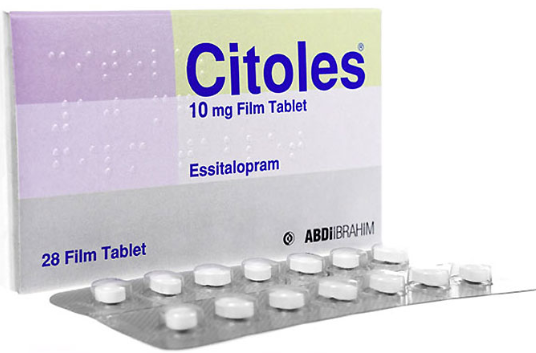Introduction Stalopam 10 mg is a prescription medication containing clonazepam, a drug in the benzodiazepine family. Doctors commonly prescribe it to treat anxiety, panic attacks, and certain types of seizures. With its calming effect on the brain, it can bring quick relief, but it also comes with risks like drowsiness, dependence, and withdrawal. This complete
Introduction
Stalopam 10 mg is a prescription medication containing clonazepam, a drug in the benzodiazepine family. Doctors commonly prescribe it to treat anxiety, panic attacks, and certain types of seizures. With its calming effect on the brain, it can bring quick relief, but it also comes with risks like drowsiness, dependence, and withdrawal. This complete guide explains what Stalopam 10 mg is used for, how it works, proper dosing, possible side effects, and important precautions. Whether you’re newly prescribed this medicine or researching treatment options, you’ll find clear, easy-to-understand information here.
What Is Stalopam 10 mg?
- Active Ingredient: Clonazepam
- Drug Class: Benzodiazepine (anxiolytic and anticonvulsant)
- Form: 10 mg tablets (also available in lower strengths)
- How It Works: It enhances the effect of GABA, a brain chemical that calms nerve activity.
Stalopam’s fast action makes it useful for sudden panic attacks or acute seizure control. It also has a longer half-life than some other benzodiazepines, meaning its effects last up to 12 hours.
Primary Uses of Stalopam 10 mg
1. Anxiety Disorders
- Generalized Anxiety Disorder (GAD): Eases chronic, excessive worry.
- Panic Disorder: Stops or reduces the severity of panic attacks.
- Social Anxiety: Helps manage extreme fear of social situations.
2. Seizure Disorders
- Absence Seizures: Brief lapses in awareness, common in children.
- Myoclonic Seizures: Sudden muscle jerks in arms or legs.
- Atonic Seizures: Temporary loss of muscle tone causing falls.
3. Off-Label Uses
- Restless Legs Syndrome: Reduces leg movements at night.
- Sleep Disorders: Short-term insomnia relief.
- Alcohol Withdrawal: Calms agitation and prevents seizures during detox.
How to Take Stalopam 10 mg
- Follow Your Doctor’s Orders: Never adjust dose without medical advice.
- Typical Starting Dose: For anxiety, 0.25–0.5 mg twice daily. For seizures, 1.5 mg divided into three doses.
- Titration: Your doctor may slowly increase dose to reach effectiveness, up to 10 mg per day in divided doses.
- Administration: Swallow tablets whole with water. Can take with or without food.
- Timing: Maintain consistent intervals (e.g., morning and evening) to keep steady blood levels.
- Duration: Short-term use is safest. Long-term treatment increases risk of dependence.
Key Precautions and Warnings
- Risk of Dependence: Even weeks of use can lead to tolerance and withdrawal symptoms on stopping.
- Avoid Alcohol: Mixing with alcohol boosts sedative effects and may be dangerous.
- Operating Machinery: Causes drowsiness—do not drive or use heavy machinery until you know how it affects you.
- Pregnancy & Breastfeeding: Not recommended; consult your doctor for safer alternatives.
- Age Considerations: Elderly patients may need lower doses due to slower drug clearance.
Common Side Effects
| Side Effect | Frequency | Management Tips |
|---|---|---|
| Drowsiness & Sedation | Very common | Take at bedtime; avoid driving. |
| Dizziness | Common | Stand up slowly; stay hydrated. |
| Fatigue | Common | Schedule rest; moderate activity levels. |
| Memory Impairment | Occasional | Use reminders; avoid complex tasks. |
| Muscle Weakness | Occasional | Light exercise; discuss with doctor. |
| Coordination Problems | Occasional | Avoid steep stairs; wear supportive shoes. |
| Increased Salivation | Rare | Suck sugar-free candy; sip water. |
If side effects persist or worsen, inform your healthcare provider. They may adjust your dose or switch medications.
Serious Side Effects (Seek Medical Help)
- Severe Allergic Reaction: Rash, itching, swelling, trouble breathing.
- Severe Drowsiness or Confusion: Excessive sedation could signal overdose.
- Mood Changes: Depression, suicidal thoughts, extreme agitation.
- Respiratory Depression: Slow or shallow breathing, especially when combined with opioids or alcohol.
- Withdrawal Seizures: Abrupt discontinuation can trigger seizures. Taper dose gradually.
Seek emergency care or call your doctor immediately if you experience these symptoms.
Drug Interactions
Stalopam can interact with many medications, increasing side effects or reducing effectiveness:
- Opioids & Other Sedatives: Additive respiratory depression.
- Antidepressants (SSRIs, TCAs): May boost sedation or affect mood.
- Anticonvulsants (e.g., phenytoin): Require dose adjustments.
- Antifungals (ketoconazole): Slow clonazepam clearance, raising blood levels.
- Macrolide Antibiotics (erythromycin): Similar clearance issues.
Always inform your doctor or pharmacist of all prescription, over-the-counter meds, and supplements you take.
Tapering and Discontinuation
Stopping clonazepam suddenly can cause rebound anxiety, insomnia, and seizures. To discontinue safely:
- Gradual Taper: Reduce dose by 10–25% every 1–2 weeks.
- Monitoring: Your doctor will monitor withdrawal symptoms and slow taper if needed.
- Supportive Care: Counseling, relaxation techniques, and non-benzodiazepine sleep aids can help.
- Follow-Up: Regular check-ins to assess progress and adjust plan.
Never stop Stalopam 10 mg on your own—always under medical supervision.
Storing and Handling
- Storage Conditions: Room temperature (20–25 °C), away from moisture and heat.
- Secure Storage: Keep in a lockbox to prevent misuse by others.
- Disposal: Follow local guidelines or pharmacy take-back programs—do not flush.
Proper storage maintains drug stability and prevents accidental ingestion.
FAQs
Q1: Can I take Stalopam 10 mg for chronic anxiety?
A: Short-term use is preferred. Long-term use requires careful monitoring for dependence.
Q2: How quickly does Stalopam work?
A: Effects can start in 30–60 minutes, with peak anxiety relief around 1–2 hours post-dose.
Q3: Is Stalopam safe for children?
A: Clonazepam doses differ for pediatric epilepsy. Only use under strict pediatric neurology guidance.
Q4: What if I miss a dose?
A: Take it as soon as you remember unless it’s within 2 hours of your next dose. Do not double up.
Q5: Are there natural alternatives?
A: Mindfulness, cognitive-behavioral therapy, and supplements like magnesium or valerian can help but talk to your doctor first.
Conclusion
Stalopam 10 mg (clonazepam) is a powerful option for treating anxiety disorders and certain seizure types. It acts quickly to calm overactive nerves but carries risks of drowsiness, dependence, and withdrawal if used improperly. By following your doctor’s dosage instructions, monitoring side effects, and tapering off carefully, you maximize benefits while minimizing harm. Always discuss other medications, alcohol use, and medical conditions to avoid unwanted interactions. With responsible use, Stalopam 10 mg can be an effective tool in your mental health and seizure management plan. If you’re considering this medication, schedule a consultation to determine if it’s right for you.
















